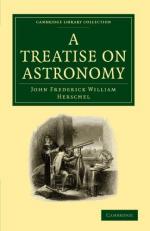|
This section contains 908 words (approx. 4 pages at 300 words per page) |

|
John Herschel, the son of the astronomer William Herschel, worked in mathematics, chemistry, optics, and solid-state physics; pioneered in photography and instigated the regular use of photography in astronomy; invented blueprints; initiated simultaneous worldwide meteorological observations; introduced the theory of isostasy in geology; and was the world's leading observer-theoretician of double stars and nebulae. His Treatise on Astronomy (1833), continued as Outlines of Astronomy (1849), although deliberately common sense in treatment, was authoritative in content even for professionals until the 1860s. He was England's most famous scientist from 1830 to about 1860.
Herschel's Preliminary Discourse on the Study of Natural Philosophy (1831) was a starting point for his philosophic contemporaries, the more radical (post-Kantian) William Whewell and the more conservative (Humean) J. S. Mill; in fact, many errors were deleted from Mill's Logic in its second edition because Herschel supplied detailed criticisms of the scientific passages in the first...
|
This section contains 908 words (approx. 4 pages at 300 words per page) |

|


